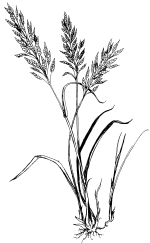
The Farm Depression: A Turning Point
The 1970s was a decade of agricultural prosperity, but the farm economy took a sharp turn in the 1980s, leading to bankruptcies throughout American farm country. The farm depression accelerated the shift to large-scale industrial agriculture in Rice County.
The 1970s: The Build-Up
Due to crop failures in Eastern Europe and the Soviet Union, prices and international grain exports were at record levels. High prices led to:
-
Crop monoculture: Farms focused on cash crops like wheat, corn, and soybean
-
Larger farms: More prosperous farmers bought out bordering farms
-
Higher prices for farmland: As farmers demanded more farmland, the value of it increased, raising its price
-
Bigger, more expensive equipment: Farmers needed more equipment and machinery because of their larger farms.
-
More debt: Farmers could easy borrow money because of government policies, the wealth of farmers at the time, and the thriving farm economy
The 1980s: The Crash
The agricultural market took a sharp nose dive during the 1980's. As farm prices fell, farmers couldn't make payments on their debt. Many farmers were forced to sell to large companies. The farm depression accelerated the shift to large monoculture (single-crop) agriculture.
In Rice County:
-
Farms grew bigger: In 1978, Rice County had 1,365 farms. In the 1980s, that number fell to 1,237 by 1982--but the total acreage in agricultural expanded by more than 12%. Farms with more than 1,000 acres increased from 9 to 15.
-
-
Productivity increased: Between 1921 and 1960, Rice County produced an average of 52.6 bushels per acre per year. In the 1970’s Rice County produced 97.4 bushels per acre per year

But not all farmers were equally affected.
Dairy farms, for example, were protected from falling prices by a federal milk support program put in place in 1969.
Richard Koester, owner of the Koester Prairie farm, resisted the shift to cash crops and kept the site as pasture for his cattle. As an older farmer, his experiences working in the Great Depression left him cautious of prosperous times and a strong believer in saving rather than expanding.
Cattle on Koester Prairie site


